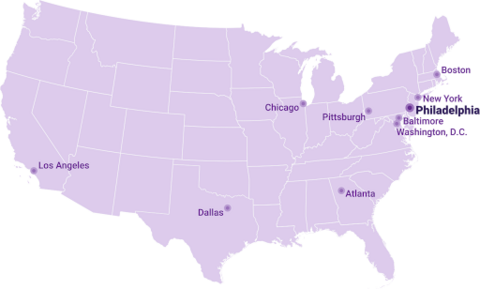
October 29, 2024
When compared to our peer regions, Greater Philadelphia’s key industries are supported by a workforce that is at lower risk of automation and has less capacity to work remotely.
Advancements in digital tools and technologies have the capacity to alter where and how we work (telework), as well as produce and distribute goods and services (automation). Increased and rapid digitalization of the economy has implications for everything from regional housing markets and land use decisions, to unemployment rates and supply chains. However, digitalization and its impacts manifest differently across occupations, industries, and even regional economies.
For example, regional economies that are overly reliant on industries whose workforces have a higher capacity to telework may need to adopt policies aimed at talent retention and quality of life improvements. Conversely, regions with economies based on industries whose workforces are at greater risk of automation may face increased challenges related to the reskilling and upskilling of a displaced workforce.

In order to better understand the implications for Greater Philadelphia’s workforce and overall economy, DVRPC staff worked to quantify the degree to which industry-specific workforces have the capacity to work remotely, as well as the extent to which they are at risk of automation.
The analysis was recently published as an interactive online dashboard, Comparing Regional Economies: Workforce Automation and Telework. Within the dashboard, users can compare Greater Philadelphia's workforce industry mix, telework capacity, and automation risk with that of nine peer regions from across the United States.
Learn more about workforce development at DVRPC.